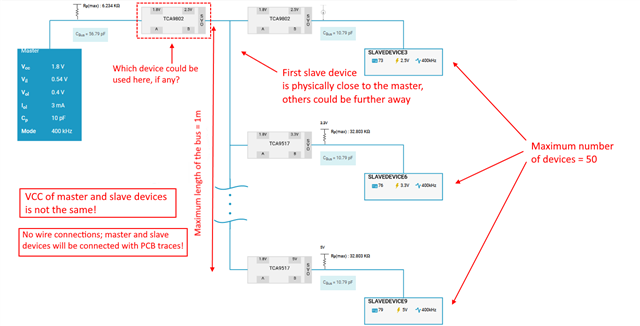Other Parts Discussed in Thread: TCA4311A, TCA9511A, TCA9517, TCA9803, TCA4307,
Hi Team,
We received this inquiry from our customer.
So we are building a certain project which will use interchangeable responder devices and one controller device, all communicating using I2C. Because we would like to use a higher number of responder devices, we are aware that adding them will also add capacitance to the I2C bus. So we have decided that using an I2C buffer is inevitable. Now my question for you is, is there such a device that could be used as an I2C buffer even for I2C busses that could reach lengths of up to 1m, and also, will there be need for a separate logic level translator, because not all responder devices will use the same logic, or is there such an I2C buffer which is also a logic level translator?
and also hot swapping is a must because the responder devices will be interchangeable.
Our customer shared the diagram below showing the details of their application.

I suggested TCA4311A buffer on both controller and responders since the responders are removable and the distance between the controller and responder is quite far (1m max). However, based on the application notes entitled "
Regards,
Danilo

